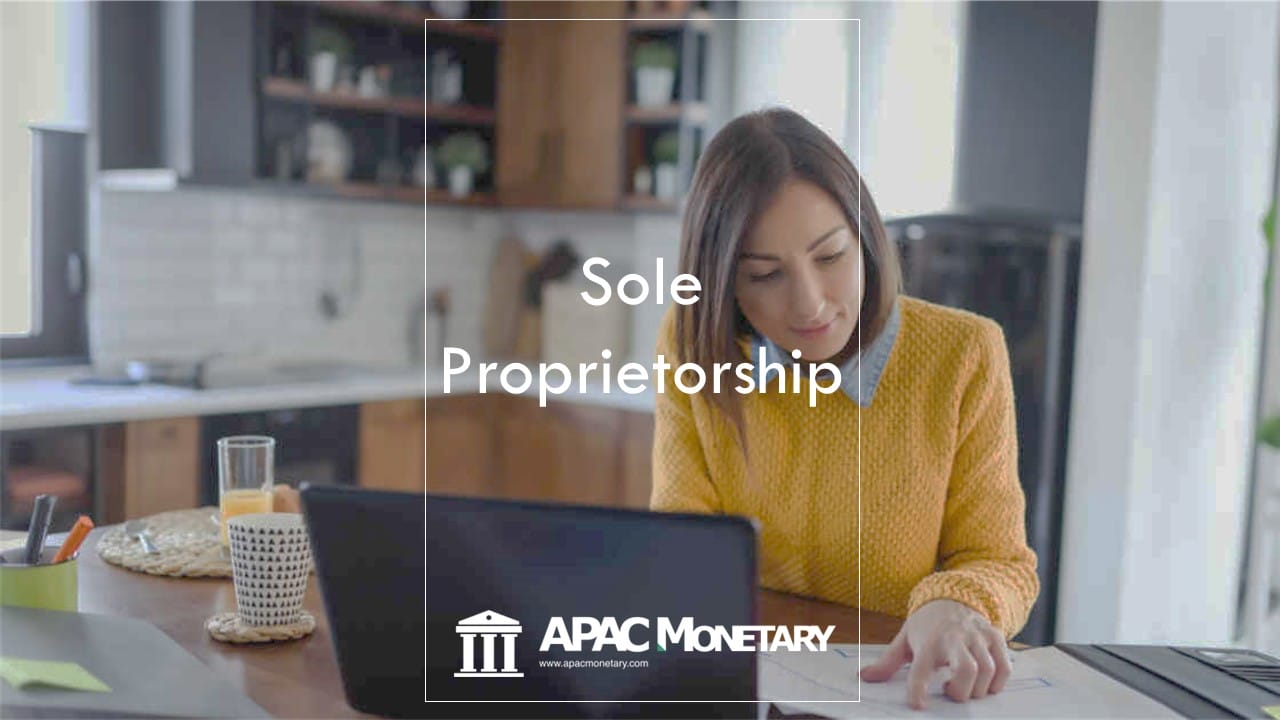Table of Contents
Sole proprietorship businesses in the Philippines account for the majority of all businesses. This is because these businesses are easier to start and run than other types. They also have lower startup costs and minimal bureaucracy. However, sole proprietorship businesses have some disadvantages compared to other types of businesses. These include the fact that they are less stable and that they are more vulnerable to economic downturns.
A sole proprietorship business in the Philippines is a great way to start your own business or expand your current business. As with any business, however, it takes planning and effort to succeed as a sole proprietor. This article provides tips on starting and running a successful sole proprietorship in the Philippines.
What is a sole proprietorship?
A sole proprietorship in the Philippines is a business entity that is owned and operated by one individual. There is no legal separation between the owner and the business, so the owner is responsible for all debts and liabilities of the business. The owner also receives all profits from the business. This type of business structure is the simplest and most common form of business organization.
How to set up a sole proprietorship in the Philippines?
Depending on your industry, you may need to register your business with the following government bodies.
1. Department of Trade and Industry
3. Local Government Units where your business will be based.
- Barangay
- Mayor’s permit
4. You must register with the following government agencies if you hire employees:
- Social Security System
- Philippine Health Insurance Corporation
- Home Development Mutual Fund
Application requirements for a sole proprietorship in the Philippines
Here are the processes and requirements to register a sole proprietorship in the Philippines.
Step 1: Name registration at the Department of Trade and Industry (DTI)
Follow these procedures to register with the Department of Trade and Industry (DTI):
• Click here to access the DTI’s Business Name Registration System https://bnrs.dti.gov.ph/registration
• Review and accept the terms and conditions.
• Write your personal information.
• Select the kind or industry of your firm (ex., trading, publication, online, etc.)
• Submit your well-thought business name.
• Check to see if the name is available or if it meets the criteria.
• Fill in other essential details if your desired business name has been approved.
• Pay the necessary fees.
• Print your certificate of registration.
Step 2: Visit the Bureau of Internal Revenue (BIR)
Here’s how Filipino entrepreneurs can register their business using the Bureau of Internal Revenue’s NewBizReg Portal.
A) To see the complete list of documentation requirements, go to https://www.bir.gov.ph/newbizreg/
Then click the appropriate links if you are applying for sole proprietors, professionals, and mixed-income earners; for corporations, partnerships; for cooperatives, associations, and other non-individuals; or for branch offices.
B) Determine your filing and payment responsibilities.
Please download and complete the tax type questionnaire so the BIR can assess your applicable tax liability. Click here to download the BIR file and understand the type of tax appropriate to your business.
Scan the completed tax type questionnaire and attach it to your email application as an attachment.
C) Pay the registration fee and lose documentary stamp tax
Pay the P500.00 registration fee and P30.00 loose DST using the BIR’s ePayment Channels by taxpayers with a current Taxpayer Identification Number (TIN).
You must pay the P500.00 registration fee and P30.00 loose DST at the new business registrant counter at the Revenue District Office (RDO) upon pick-up of the certificate of registration by a taxpayer-applicant who does not have an existing TIN.
D) Attach the relevant documents to your email and send them to the Revenue District Office within your local city or jurisdiction.
What are the options for submitting the documents?
- To find the email address of the RDO where the application should be filed, enter your business address or home address (in the case of professionals who do not have a physical business address).
- When you’re ready to submit, fill out the following fields and click the “Email your Application” button.
Click here to get the full instruction details from the BIR website.
Step 3: Register your business to your Barangay hall
Visit the Barangay hall and submit the required documents.
Pay the necessary fees and clearance tax.
Obtain your clearance tax certificate.
Step 4: Register your sole proprietor business in City Hall or Municipal Hall to obtain your Mayor’s Permit.
Look for the Business and Licencing Permit Office (BPLO) when you arrive at the local government office.
Submit all the necessary documents, including the following:
- Barangay clearance certificate
- DTI’s certificate of registration
- 2×2 recent photos
- Proof of address
- And other required documents as requested by the local government unit such as fire, sanitary, and signage.
Pay the Mayor’s Permit
Wait for a couple of hours or days to get your Mayor’s Permit.
Step 5: Apply to SSS
The Employer Registration Form (SS Form R-1) must be submitted along with the Specimen Signature Card (SS Form L-501) and the original and photocopy of the following required documents, all of which must be duly signed by the authorized signatory:
- Owner or,
- In his or her absence, any representative with a valid Special Power of Attorney (SPA).
Requirements for supporting documents (any of the following):
- Department of Trade and Industry Certificate of Business Name Registration (DTI)
- Municipal Office Permit for a Business
For more information, visit the SSS portal. Click here.
Step 6: Apply PhilHealth
To be able to provide social health insurance coverage to their employees, all private sector businesses must register with PhilHealth.
Private-sector employers (including domestic helpers) who enrolled with the SSS before July 1, 1999, are automatically registered with PhilHealth, although they must update their data.
Procedures and specifications
The Philippine Business Registry is where employers can register their businesses (PBR). They will no longer be necessary to submit documents once they have registered in our system. If the employer does not register through the PBR, the following documents must be submitted: Registration with the Department of Trade and Industry (DTI)
Sole proprietorship businesses in the Philippines must submit the following documents to any PhilHealth Office to register their employees:
1. Form ER1 (Employer Data Record) (with duplicate)
2. For each employee, a PhilHealth Membership Registration Form (PMRF) is required (with duplicate).
Advantages and disadvantages of a sole proprietorship
There are many advantages and disadvantages to owning a sole proprietorship. This is really depending on the purpose and how you want to run your operations.
A sole proprietorship business in the Philippines is easy to start and manage independently. But there are several disadvantages as well when the economic downturn hits your industry.
In detail, here are the Advantages and disadvantages of a sole proprietorship business in the Philippines.
Advantages of a sole proprietorship business in the Philippines
- The business application is simple
- Streamlining the setup process for startups and newbie entrepreneurs
- The price is reasonable.
- Complete control in running your business.
- Flexibility in hiring employees.
The Decision-making process is not as complicated as a partnership or corporation type of business. A sole proprietorship business is a type of business owned and operated by one individual. This format has many advantages, including the fact that it is easy to start and operate, and there are no formalities or obligations associated with it. Additionally, as a sole proprietor, you have complete control over your own business, which can give you a competitive edge in the market.
Disadvantages of a sole proprietorship business in the Philippines
What are the disadvantages of a sole proprietorship business? Provide answers in bullet points.
- The protection and benefits of the business entity are limited.
- The ability to raise capital and expand the business is limited.
- Limited liability for business debts and losses.
- Your ability to negotiate contracts or agreements on behalf of the business can be limited.
- Limited access to specialized knowledge or resources necessary for running the business.
- Tax breaks and incentives that are available to businesses, in general, are restricted.
A sole proprietorship business is a small business that is owned and operated by one individual. The main disadvantage of a sole proprietorship business in the Philippines is that there are fewer legal protections available to it than there are to businesses that are owned and operated by a corporation. This means that a sole proprietor can be subject to greater risk than a corporate owner and can find it harder to attract investment or secure credit. In addition, due to the limited liability of a sole proprietorship, an owner can be personally liable for any financial losses or mistakes made on their behalf.
Taxation of a sole proprietorship business in the Philippines
As the owner of a sole proprietor business in the Philippines, you are responsible for paying your own taxes. The standard corporate tax rate is 30%. However, there are a number of deductions and exemptions that can reduce your tax bill. In addition, you may be able to deduct business expenses such as rent, utilities, and employee salaries. Finally, you may also be able to claim credits for contributions to social welfare programs such as the Pantawid Pamilyang Pilipino Program (4% of gross profit).
Overall, it is essential to consult with an accountant or tax specialist if you have questions about the taxation of a sole proprietorship business in the Philippines.
How to dissolve a sole proprietorship in the Philippines?
It cannot be easy to dissolve a sole proprietorship in the Philippines, even if it is not doing well. This is due to the bureaucratic process in the local and national governments. There are specific requirements that must be met and formal procedures that must be followed. If the sole proprietorship has been in operation for over a year, then it may also be subject to special taxation regulations. A lawyer may be needed to help navigate these complicated waters.

Conclusion: Sole proprietor business in the Philippines
There are a number of benefits to starting or running a sole proprietorship business in the Philippines. First and foremost, there are no corporate taxes in the Philippines, which can save you a significant amount of money each year. Additionally, operating as a sole proprietor allows you to operate your business exactly how you want without having to worry about dealing with bureaucracy or interference from other members of management.
However, there are also some drawbacks to operating a sole proprietorship business in the Philippines. First and foremost, it can be challenging to get customers and vendors who are willing to deal with someone who is not affiliated with a larger company. Additionally, it can be difficult to find qualified employees if you do not have any existing relationships in the marketplaces you wish to operate in.










